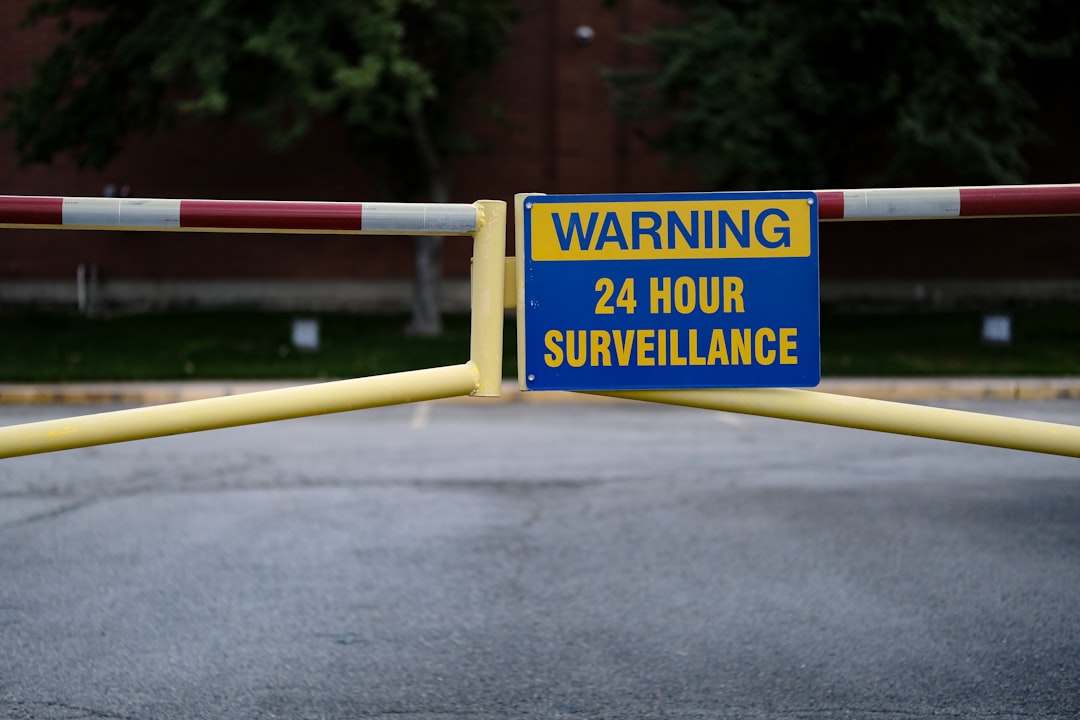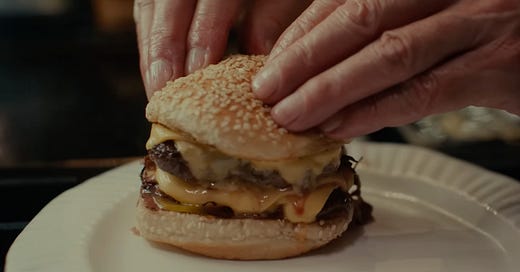Some spoilers within.
I want Ralph Fiennes’s cheeseburger. The cheeseburger, that is, made by Chef Slowik, his character in the satirical horror film “The Menu.” The burger appears late in the movie in the first and only appetizing moment throughout. Watching Slowik, with great calm and care, make this beautiful, juicy double cheeseburger, I caught myself saying out loud, “That smells good.”
The burger symbolizes the joy of cooking food that people find joy in eating. But it’s more than that. The burger is Slowik’s Rosebud, his lost innocence about his life’s work. “The Menu” is a movie not just about the soul-twisting nature of the high-end restaurant business, or, as has been suggested, an allegory of the soul-twisting nature of the movie business. It’s about what has happened to so many kinds of work and what this means for the humans who do it.
Slowik, a celebrity chef, appears at first to hold all of the power, but it’s soon clear that his psychopathic rage comes from having too many bosses — ranging from a purse string-holding angel investor to the imperious food critic who takes credit for his career to his entitled, status-hungry customers.
And who doesn’t have too many bosses in this 21st century? More than 400,000 Americans work two full-time jobs and many more work multiple part-time jobs. 30% of 18-29-year-olds and a quarter of lower income earners report having done online gig work. According to McKinsey, 58 million are independent workers “who identified as a contract, freelance, temporary, or gig worker…In some cases, respondents hold full-time jobs but also engage in a ‘side hustle.’” It’s impossible to calculate how many supervisors these workers have. Even CEOs are beholden to boards and shareholders, and small business owners like Slowik who thought they’d be their own boss can find themselves at the mercy of creditors and customers.
One of the first things I figured out about the public-facing job of teaching was how many people I was supposed to keep happy: a principal, assistant principals, superintendent, assistant superintendents, department head, team leader, and hundreds of parents, step-parents, and guardians. Rate My Teacher, a kind of Yelp for students, then came to be, and teachers were told to ask our students for evaluations. Each year after, I encountered a hundred teenagers who may have been encouraged to think of themselves as customers and as equipped to critique the curriculum and my instruction.
Customers, clients, and users of everyday services can seem ever more like bosses. In the hospitality business, tipping customers have always been in the position of giving and withholding praise and income — and of course, of sexually harassing or otherwise power-tripping on and abusing workers, a fact of life in Slowik’s kitchen. Is the manager not available to complain to? Now there are Yelp and other sites on which to “tattle,” as comedian Sebastian Maniscalco puts it. Gig workers operate under the tyranny of the online rating systems companies put into place. I’m glad I can report a dangerous driver to Uber, but when Instacart last week wanted me to rate the person who shopped for and delivered my groceries on half a dozen criteria — some involving factors out of their control — my first thought was, why the &%#@ would I do that?
Instacart’s multi-point scoring rubric only makes sense in a work world of creeping control and over-surveillance. Particularly as remote work has risen, more companies are monitoring their employees with technology, leading to higher stress and resignations, the BBC reported:
Some monitoring programs record keystrokes or track computer activity by taking periodic screenshots. Other software records calls or meetings, even accessing employees’ webcams. Or, like in Mark’s case, some programmes enable full remote access to workers’ systems….[some] are also using that information to anticipate what they might do, through “predictive analytics about whether a worker is likely to, for example, ask for a raise or leave for another job.”
If surveillance doesn’t by itself ensure productivity and compliance, the voluminous data it produces can be used to critique and nitpick workers to death. “The Menu” painfully illustrates these things, particularly and gruesomely the last one. (Also grotesque: a 63-page document outlining how teachers are evaluated, calls for cameras in classrooms, and how students are prepared for the work world via constant testing and scoring.)

“The Menu” also illuminates how many workplaces have come to value over-engineering above time-tested methods and innovation above quality. The restaurant manager played by Hong Chau invites diners “to observe our cooks as they innovate” in a way that sounds like a threat to those being observed. Slowik’s menu, a vicious parody of culinary faddishness, is meant as an insult to his foodie customers. The obnoxious snob of a food critic played by Janet McTeer, though eager to fault-find, is clueless about its outrageousness, primed to applaud the inedible as ground-breaking minimalism, the absurd as boundary-stretching art.
This all contrasts in a striking way with the meaningful pleasure that Margot, played by Anya Taylor-Joy, experiences when she gets to eat that perfect, simple, classic cheeseburger. And the joyless precision with which Slowik’s cooks assemble their overly complex dishes and march them to tables for diners’ inspection is at complete odds with the disposition of Slowik as he applies himself to crafting that burger.
Perhaps the most odious character in the film is Tyler (played by Nicholas Hoult), who fancies himself a connoisseur; Tyler’s know-it-all attitude provokes Slowik, who has devoted his life to studying technique, planning menus, sourcing ingredients, creating recipes, and preparing food. In Tyler, we can perhaps see ourselves in milder, less offensive form: as the fan willing to boo the ref though we haven’t played the game since sixth grade, the browser who wants the salesperson to know we’re a buff. At the same time, we’ve likely been on the other side, worn down by critique from non-experts, lectured to about our own trades or fields. I’m unlikely to forget the face of my oncologist when he told me early in the pandemic that immunocompromised patients were arriving for appointments eager to argue with him about vaccines. He was so very weary.
What has happened to work? It’s always been work; one of my bosses in the 90s loved to retort, “That’s why they call it work!” when anyone complained about long hours or difficult projects or people. Except that when workers are asked about job satisfaction, though pay and benefits are key, so are the elements Steven Pinker spotlighted in his book “Drive”: mastery, autonomy, and purpose. These intrinsic motivations are easily chipped away within institutions that fail to treat workers with the respect they deserve and within a society that undervalues them. Too often their ability to do the work they love well — the way they know they can and should do it — is denied them.
“You’ve taken the joy out of eating,” Margo says to Slowik. “Every dish we’ve had tonight was some intellectual exercise rather than something you just want to sit and enjoy.” I think of where I still found joy in teaching in my last few years. It certainly wasn’t in the newest technology or mandate, the latest initiative or method. It was in those moments when students realized they understood a complex symbol or an unlikeable character or had arrived at an original thesis, those moments when together we engaged in deep talk about a book, building on each other’s ideas. I think of my brilliant doctor, trapped behind a laptop for much of our time together, forced to stare at a screen while being led through a series of data fields by some piece of software — my thoughtful, gentle, extraordinarily well-trained doctor, about whom a health care conglomerate will later send me a text with a rating scale. Why did he go into medicine? Where is his joy?
I want Ralph Fiennes’s burger, though his Slowik is of course no hero. He is obscenely arrogant, utterly insane, brutally inhumane, and ultimately self-destructive. But his final, symbolic act of resistance — and that gorgeous, perfect burger —makes “The Menu” a powerful statement against a system that bleeds the meaning from work.





